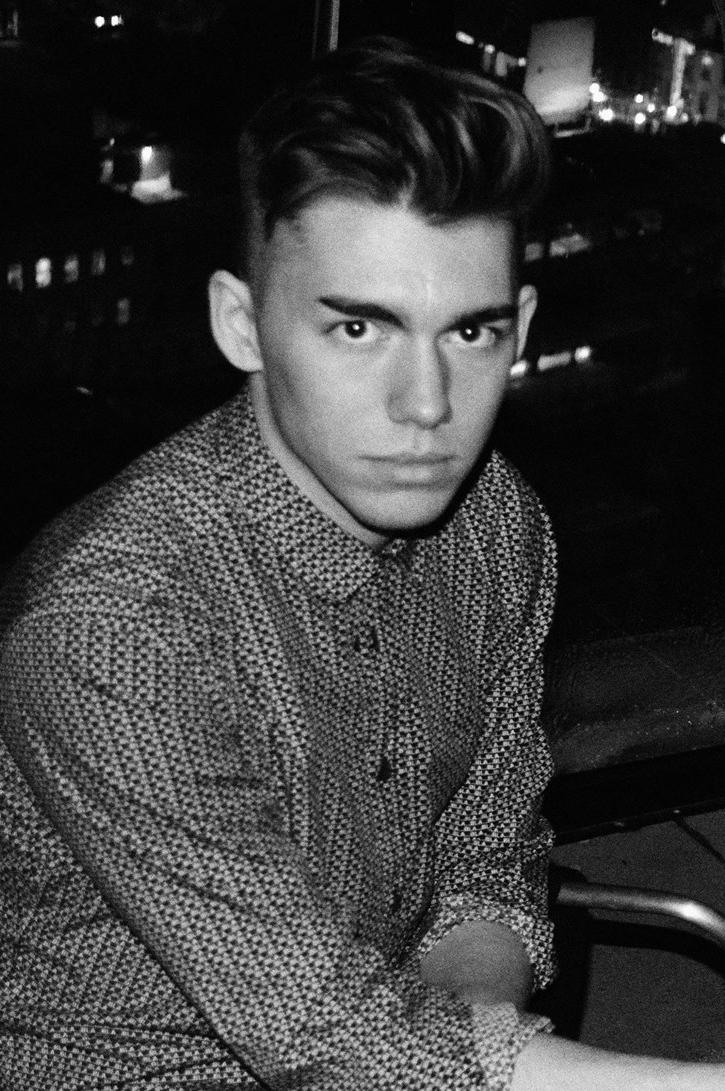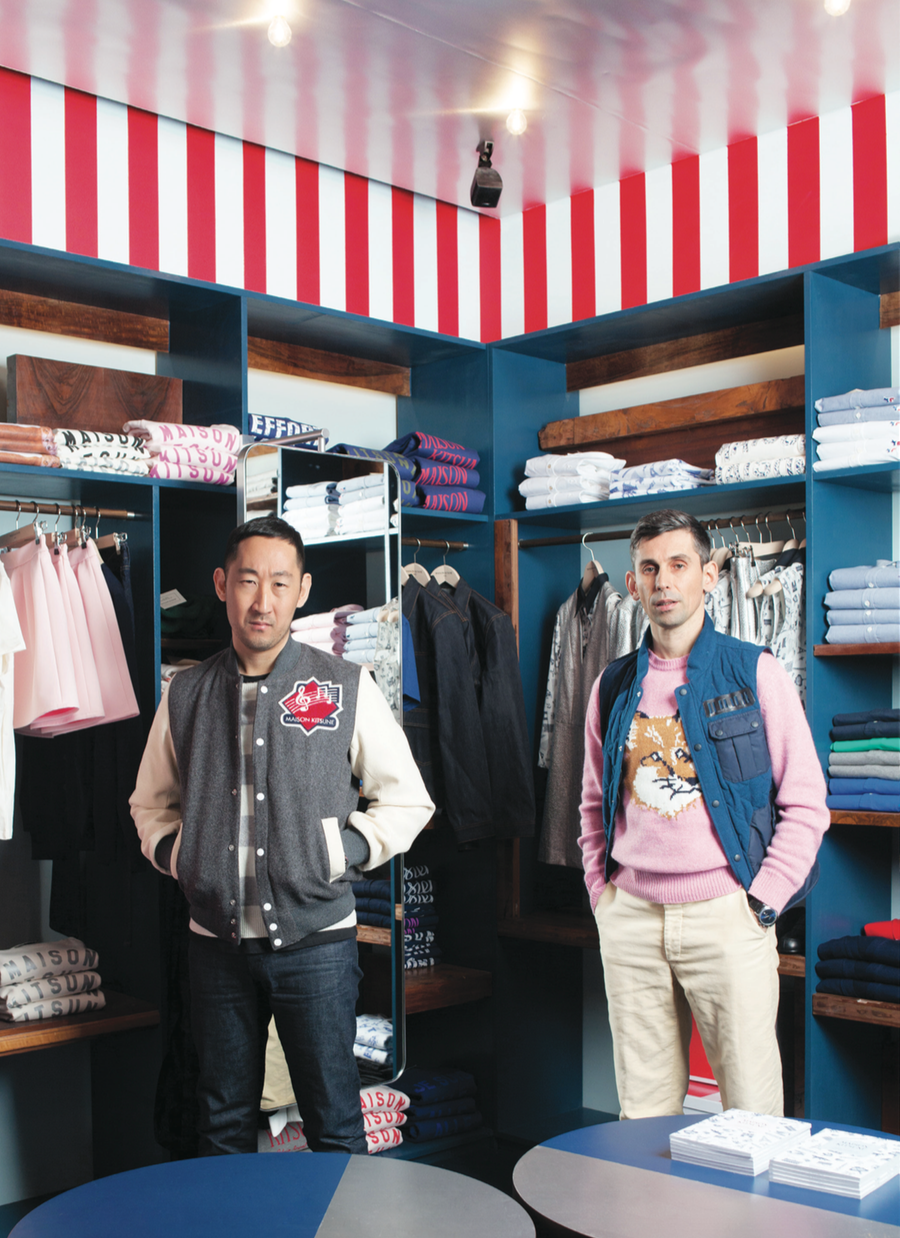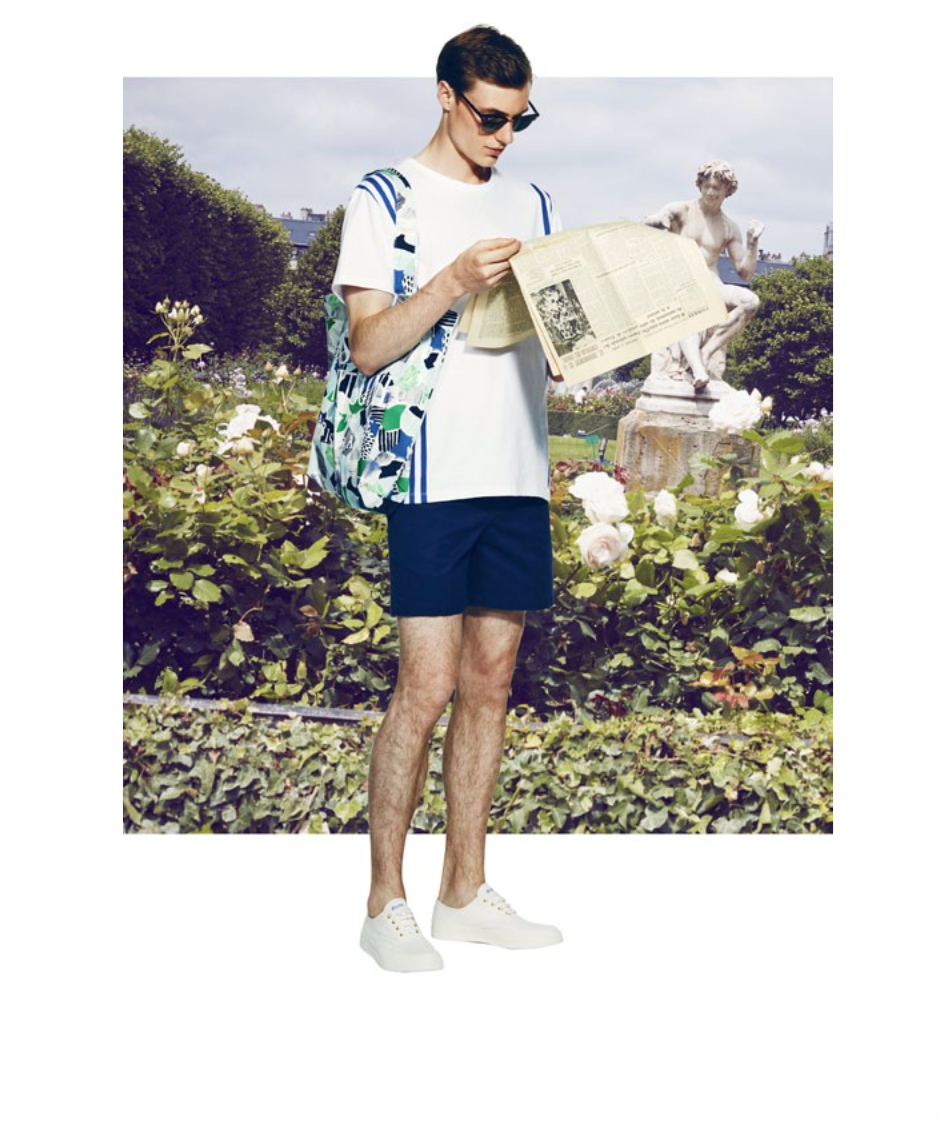Maison Kitsuné: How Gildas Loaëc and Masay Kuroki are Building a Lifestyle Brand that Transcends Geography and Genre
Written by Tyler L. Stafford
Upon walking into a Maison Kitsuné boutique, one may be slightly confused as to the brand’s origin; a French-Japanese name, tees and sweatshirts emblazoned with French phrases, and preppy shorts and polos reminiscent of 50’s Americana. Regardless of when and where you think this brand originates, it immediately becomes somewhere that you want to be. The brand is indeed an amalgam of cultures (and even disciplines) that fit together so organically probably because of how it was born- through a friendship. “It is funny. In Japan, people think we are a purely Japanese brand whereas in France it is vice-versa,” said co-founder Gildas Loaëc in an interview last year with Hypetrak. Loaec is French and his partner Masay Kuroki is from Japan.
Loaëc was a 19-year-old music enthusiast running a record shop called Street Sound in the 1st arrondissement of Paris when he met Masaya Kuroki. Loaëc used his record shop more as an instrument for meeting DJs, artists, and other culturemakers and less as a means to turn a profit (he admits the shop did not have huge sales). Next door, Kuroki, who was then an architect studying at the prestigious Ateliers Jean Nouvel, was working in a vintage store on the weekends to pay his rent. “That’s where I discovered a lot of clothing. I had always been curious about style and about the connection it had with music—music and fashion have been related since even the time of Versailles,” Kuroki said in a 2012 interview with GQ. Loaëc became involved with French musical group Daft Punk and enlisted Kuroki’s help when the band travelled to Japan to produce a film (Interstellar 5555) for their album “Discovery.” After the trip, the duo decided to form a record label and clothing brand, naming it “Kitsuné” after the kanji word for “fox.” Five years later in 2007, Maison Kitsuné showed its first collection and the record label was signing now-popular names like La Roux and Phoenix.
Today, the two are continuing to push the transculturalism embedded in their creative roots. Maison Kitsuné’s fall 2015 collection combines queues from K-Pop culture (with graphics inspired by the South Korean flag) along classic French nautical influences and vintage-feeling Anglo tailoring. And the brand’s record label, Kitsuné Maison, which generally signs and promotes electronic artists from the UK, is beginning to focus on hip hop sounds in North America. In addition to expanding their influences, they are also expanding their reach. The clothing label currently owns five boutiques and three cafés across Paris, Tokyo, and New York. A second shop on New York’s Rivington Street is slated to open later this month and next year an entire Maison Kitsuné building will open in Tokyo’s Daikanyama district.
Loaëc and Kuroki have managed to create clothes that look like music and music that sounds like fashion. It is a unique scenario that seems highly calculated but also feels intuitive. “What’s interesting is that both Masaya and Gildas don’t come from a fashion background. Masaya was an architect and Gildas was a producer for Daft Punk for over 12 years. Gildas deals mostly with the record label, and Masaya mostly with the fashion. They build a brand around things they like, their lifestyle: their type of music, fashion and coffee,” muses Maxime Richard, the North American Public Relations Manager for the duo’s clothing label who works closely with the two.
And it’s true- Loaëc can be spotted sipping espresso at the Cafe Kitsuné on Paris’s Grand Palais arcade and the two are frequently travelling together- sometimes even deejaying for their internationally touring “Kitsuné Club Nights.” On another level of involvement, Kuroki uses his architectural training to design the most of the boutiques- each one meant to reflect a different facet of the brand. Despite Loaëc and Kuroki’s lack of a fashion background (although Loaëc was influenced by friends like notable fashion documentarian Loic Prigent), the two have created a brand that has become a cult favorite across fashion scenes- in New York, the preppier downtowners; in Paris, the fashion cool-kids; and in Tokyo, the young music fans.
At an event last month at Kitsune’s New York boutique next to the Nomad Hotel, Loaëc appeared boyish- almost self-conscious- a rare humbleness in fashion that adds to the charm and genuity of the brand. Unlike larger fashion brands, where lifestyling markets the clothing, Kitsuné’s music, clothes, and stores influence each other’s cultures in a symbiosis that, so far, has been highly successful. Perhaps this is because Loaëc and Kuroki’s hypercuration feels less like a corporate strategy and more like trusting your cool best friend with good taste; walk into any distinctly different Kitsuné boutique and you’ll find everything from candles and backpacks to their latest music mixes (and -oh yeah- clothes, too). Unlike other small brands popular amongst the fashion crowd that espouse a holier-than-thou attitude, Kitsuné’s personality reads more like this is what we think is cool and if you think it’s cool, too, then… that’s cool.
________________________
About the author
 Tyler is a current Strategic Design & Management student from New York. In addition to his role as Creative Director at Beauty Fashion, New York’s oldest cosmetics trade magazine, Tyler combines his experience in business and fashion to freelance on creative projects.
Tyler is a current Strategic Design & Management student from New York. In addition to his role as Creative Director at Beauty Fashion, New York’s oldest cosmetics trade magazine, Tyler combines his experience in business and fashion to freelance on creative projects.
Recent Posts
 School of Fashion Newsletter
School of Fashion Newsletter
- SOF Newsletter- April 2021 April 5, 2021
- SOF Newsletter- March 2021 March 3, 2021
- SOF Newsletter- February 2021 February 8, 2021
- SOF Newsletter- December 2020 December 1, 2020
- SOF Newsletter- November 2020 November 2, 2020
- SOF Newsletter- October 2020 October 6, 2020
- 4/1: Fashion News, Events, Opportunities, & More April 1, 2020
- 3/4: Fashion News, Events, Opportunities, & More March 4, 2020
- 2/26: Fashion News, Events, Opportunities, & More February 26, 2020
- 2/19: Fashion News, Events, Opportunities, & More February 19, 2020

